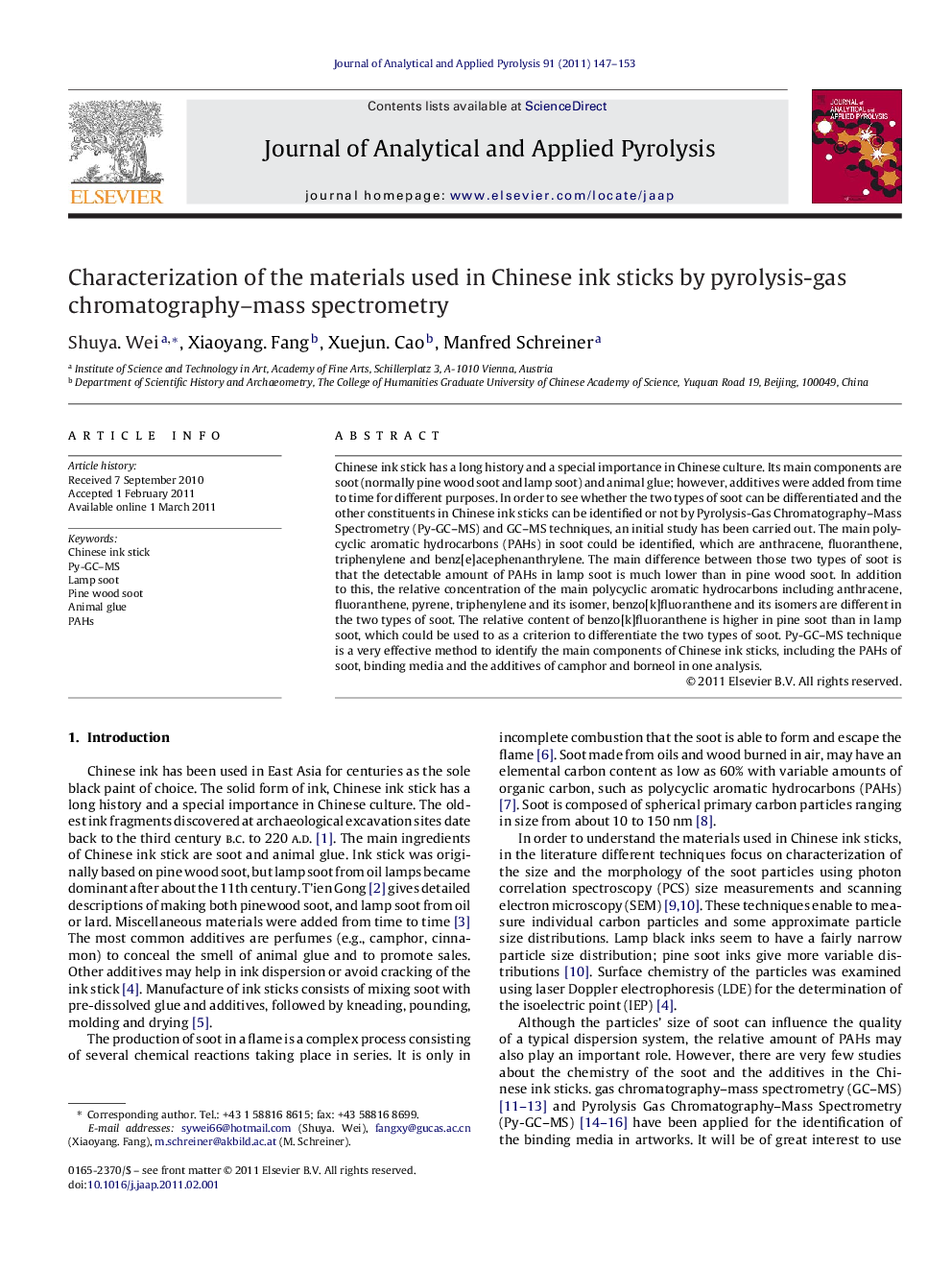| Article ID | Journal | Published Year | Pages | File Type |
|---|---|---|---|---|
| 1198004 | Journal of Analytical and Applied Pyrolysis | 2011 | 7 Pages |
Chinese ink stick has a long history and a special importance in Chinese culture. Its main components are soot (normally pine wood soot and lamp soot) and animal glue; however, additives were added from time to time for different purposes. In order to see whether the two types of soot can be differentiated and the other constituents in Chinese ink sticks can be identified or not by Pyrolysis-Gas Chromatography–Mass Spectrometry (Py-GC–MS) and GC–MS techniques, an initial study has been carried out. The main polycyclic aromatic hydrocarbons (PAHs) in soot could be identified, which are anthracene, fluoranthene, triphenylene and benz[e]acephenanthrylene. The main difference between those two types of soot is that the detectable amount of PAHs in lamp soot is much lower than in pine wood soot. In addition to this, the relative concentration of the main polycyclic aromatic hydrocarbons including anthracene, fluoranthene, pyrene, triphenylene and its isomer, benzo[k]fluoranthene and its isomers are different in the two types of soot. The relative content of benzo[k]fluoranthene is higher in pine soot than in lamp soot, which could be used to as a criterion to differentiate the two types of soot. Py-GC–MS technique is a very effective method to identify the main components of Chinese ink sticks, including the PAHs of soot, binding media and the additives of camphor and borneol in one analysis.
